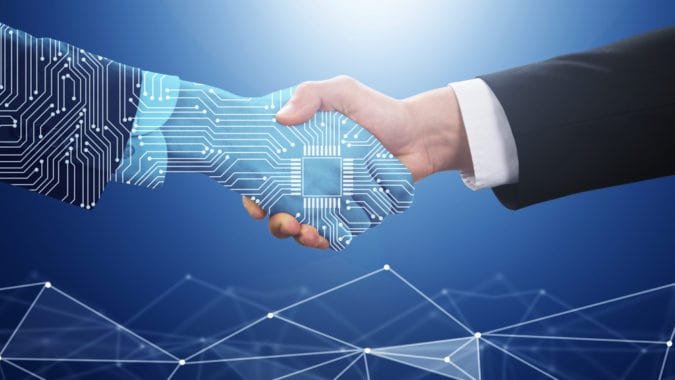We the human race have mostly feared the rise of robots, we have always thought that artificial intelligence would rise against humanity and take over the world. Today we can say that artificial intelligence has taken over most of the world but it is not the uprising that we have always feared. Artificial intelligence gives machines the ability to think and predict actions like the human mind, today AI is being used in nearly every industry. Industries like healthcare, production, and marketing are among the leading industries bemiring from AI. This article is focused on how you can use AI for generating leads and converting them.
What Is Lead Generation And Conversion?
Lead generation and lead conversion both are steps of an efficient marketing strategy used to target interested individuals. A lead is a person who shows interest in a company’s services and goods in any way or form. Leads after viewing a product give their information to the company from which the company can contact them to showcase their services. Leads can be considered as part of a much larger lifespan of strangers transitioning into customers.
Lead generation and conversion is the second step in the above-mentioned lifespan after attracting an audience, it is the process of drawing in strangers and converting them into someone who has an interest in your company’s product.
Lead generation can be done through the use of blog posts, coupons, and online content which the certain individuals’ views and are then redirected to the product’s website (this is known as Call to Action(CTA). Once the individual is on the webpage a form is presented which gathers the individual’s information and the user gains an offer in exchange for their info and now you have a potential lead for your business.
How To Use AI In Lead Generation And Conversion?
The following are some of the techniques that can be employed for the betterment of the lead generation and lead conversion.
Use Of Chatbots For Customer Queries
Chatbots have become essential for businesses that have an online presence, chatbots are used by companies for repetitive tasks like answering basic customer queries. These bots can also be used for prospecting new leads by getting customer preferences beforehand and guide them to products that suit their interest. Chatbots can also personalize the consumer experience by analyzing the available customer data. Intelligent chatbots use Natural Language Processing to better understand customer queries and can also connect customers with human agents if needed.
Use AI To Understand And Predict Customer Behavior
Machine learning is a branch of Artificial Intelligence, machine learning uses data and trains available data to predict better results. Most companies are employing machine learning techniques to the available customer data to predict customer behavior. By employing improved statistical methods with machine learning algorithms better learning models are created day by day from the unstructured data hence giving the teams to spend more time on potential leads.
Give Customers Personalized Experiences
Studies have shown that websites and business which offer their customers personalized and pleasant experiences tend to have more loyal customers. Keeping consumers loyal to your brand goes hand in hand with the experience that they get when they interact with you. Artificial intelligence tools like chatbots and machine learning prediction algorithms provide users with a custom-tailored user interface. These prediction algorithms also known as recommendation algorithms provide recommendations to potential leads based on browsing trends just like Netflix recommends what to watch based on your history.
Employ Better Grouping Tools
Every customer has their own personal preferences and needs, but their needs do come under similar groups based. These groups can be formed based on their preferences, demographics, and behaviors which are then be targeted based on their similarities at once in targeted marketing campaigns. The consumer data is collected through surveys and forms when they are redirected through Call to Action (CTA). The data is then fed to a learning algorithm which is a form of artificial intelligence from which a certain classifier is trained which is then used to segment the customers into groups according to their behaviors.
Repeat Past Success
Artificially intelligent lead generation can utilize machine learning techniques to train on the market intelligence data gathered by different firms. This data can then be used to train machine learning algorithms to scout out customers whose preferences match your product descriptions. Such matching of existing customers to your own firms can create a better pipeline for your lead generation and lead conversion systems.
Automated Email Campaigns
The previously mentioned groups that were formed on the basis of their preferences, behaviors, and histories can be used to generate an automatic email group. These emails can contain information regarding new and existing products, promos, and discounts among other things and are then sent to people who have previously shown interest in those products. Such emails can be generated based on certain trigger events like signing up or buying some products.
Build A Better Lead Generation Pipeline
The main benefit of artificial intelligence is that it can help companies make a better pipeline through which they can generate potential leads and convert them into customers. All of the above-mentioned techniques can be combine and applied in stages.
Chatbots can help create a friendlier and more personalized environment for users, prediction models can recommend products based on user preferences and past experiences. Classifiers can be used to group customers into categories which then can be targeted through automated emails and messages. Lastly, artificial intelligence can predict the behavior of consumers with a combination of machine learning.
Summing It Up
These were a few ways you could integrate artificial intelligence into your generating and converting leads for your business. All of the mentioned methods have their own impact and can be used individually or combined. The integration of AI would prove beneficial for both the consumers and the producers as it makes things easier for everyone.








